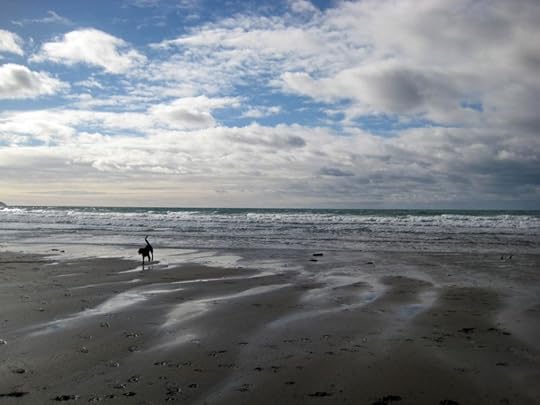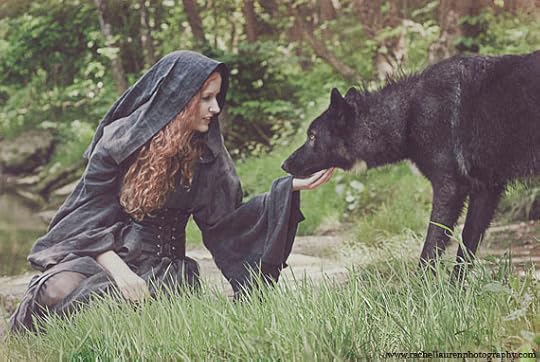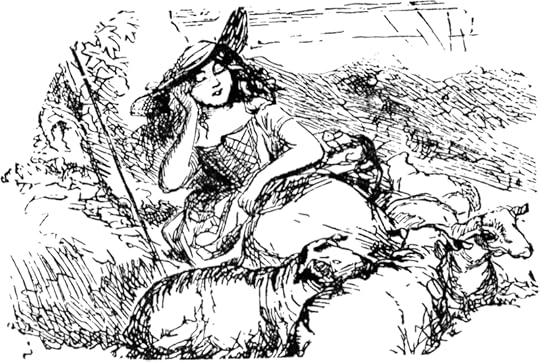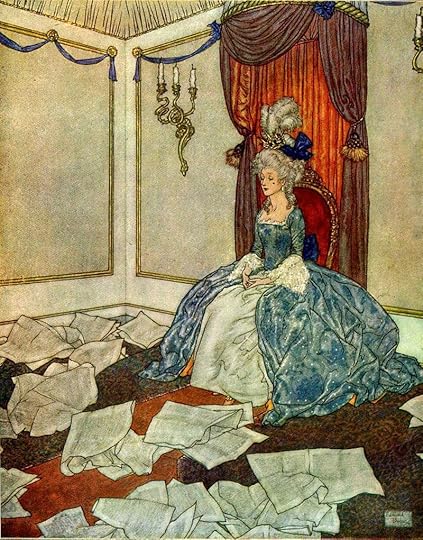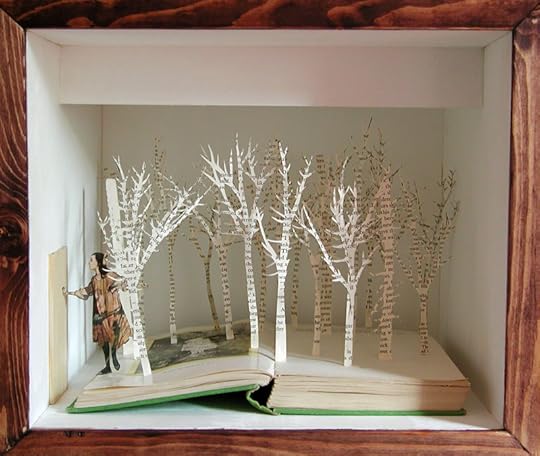Terri Windling's Blog, page 213
August 16, 2012
The companionship of water
From Brenda Peterson's Singing to the Sound: Visions of Nature, Animals, & Spirit:
"When I describe for my far-away friends the Northwest's subtle shades of weather -- from gloaming skies of 'high-gray' to 'low-gray' with violet streaks like the water's delicate aura -- they wonder if my brain and body have, indeed, become water-logged. Yet still, I find myself praising the solace and privacy of fine, silver drizzle, the comforting cloaks of salt, mold, moss, and fog, the secretive shelter of cedar and clouds.
"Whether it's in the Florida Keys, along the rocky Maine coast, within the Gulf of Mexico's warm curves, on the brave Outer Banks; or, for those who nestle near inland seas, such as the brine-steeped Great Salk Lake or the Midwest's Great Lakes -- water is alive and in relationship with those of us who are blessed with such a world-shaping, yet abiding, intimate ally.
"Every day I am moved by the double life of water -- her power and her humility. But most of all, I am grateful for the partnership of this great body of inland sea. Living by water, I am never alone. Just as water has sculpted soil and canyon, it also molds my own living space, and every story I tell.
"...Living by water restores my sense of balance and natural rhythm -- the ebb and flow of high tides and low tides, so like the rise and fall of everyday life. Wind, water, waves are not simply a backdrop to my life, they are steady companions. And that is the grace, the gift of inviting nature to live inside my home. Like a Chambered Nautilus I spin out my days, drifting and dreaming, nurtured by marine mists, like another bright shell on the beach, balancing on the back of a greater body."
 Art above: "Rhine Maidens" by Arthur Rackham (1867-1939), Tilly & Victoria on a misty beach, "Horses of Neptune" by Walter Crane (1845-1915), and Tilly (our ocean loving seal-girl) on the Cornish and Devon coasts. The final piece is a detail from Virginia Lee's pastel drawing "Underwater Beauty." For further reading, there's an article on water myths in the JoMA archives.
Art above: "Rhine Maidens" by Arthur Rackham (1867-1939), Tilly & Victoria on a misty beach, "Horses of Neptune" by Walter Crane (1845-1915), and Tilly (our ocean loving seal-girl) on the Cornish and Devon coasts. The final piece is a detail from Virginia Lee's pastel drawing "Underwater Beauty." For further reading, there's an article on water myths in the JoMA archives.
August 15, 2012
Animal stories, continued
Another excerpt from Linda Hogan's essay "First People":
"[T]he old stories of human relationships with animals can't be discounted. They are not primitive; they are primal. They reflect insights that came from considerable and elaborate systems of knowledge, intellectual traditions and ways of living that were tried, tested, and found true over many thousands of years and on all continents.
"But perhaps the truest story is with the animals themselves because we have found our exemplary ways through them, both in the older world and in the present time, both physically and spiritually. According to the traditions of the Seneca animal society, there were medicine animals in ancient times that entered into relationships with people. The animals themselves taught ceremonies that were to be performed in their names, saying they would provide help for humans if this relationship was kept. We have followed them, not only in the way the early European voyagers and prenavigators did, by following the migrations of whales in order to know their location, or by releasing birds from cages on their sailing vessels and following them towards land, but in ways more subtle and even more sustaining. In a discussion of the Wolf Dance of the Northwest, artists Bill Holm and William Reid said that 'It is often done by a woman or a group of women. The dance is supposed to come from the wolves. There are different versions of its origin and different songs, but the words say something like, 'Your name is widely known among the wolves. You are honored by the wolves.'
"In another recent account, a Northern Cheyenne ceremonialist said that after years spent recovering from removals and genocide, indigenous peoples are learning their lost songs back from the wolves who retained them during the grief-filled times, as thought the wolves, even though threatened in their own numbers, have had compassion for the people....
"It seems we have always found our way across unknown lands, physical and spiritual, with the assistance of the animals. Our cultures are shaped around them and we are judged by the ways in which we treat them. For us, the animals are understood to be our equals. They are still our teachers. They are our helpers and healers. They have been our guardians and we have been theirs. We have asked for, and sometimes been given, if we've lived well enough, carefully enough, their extraordinary powers of endurance and vision, which we have added to our own knowledge, powers and gifts when we are not strong enough for the tasks required of us. We have deep obligations to them. Without other animals, we are made less."
Sacred stories about the relationship between humans and animals can be found not only in North America but in mythic traditions all around the world. For further reading, I recommend Lady and the Beasts: The Goddess and Her Sacred Animals by Buffie Johnson, Animals in Celtic Myth and Life by Miranda Green, and the Animal Series from Reaktion Books.
The gorgeous pictures above are by Rachel Lauren, an artist in central Ohio who specializes in photographing canines, both wild and domestic. The photographs here feature Lucian (Rachel's North American Wolfdog) and Grace Nuth (mythic artist and author of The Beautiful Necessity and Domythic Bliss blogs). Visit Rachel's website and blog to see more of her beautiful work, and Lucian's Facebook page to learn more about Wolfdogs.
"First People" was published in Intimate Nature: The Bond Between Women and Animals, edited by Linda Hogan, Deena Metzger, and Brenda Peterson (Fawcett Columbine/Ballatine, 1998).
August 14, 2012
Animal stories
From Linda Hogan's essay "First People":
"What finally turned me back toward the older traditions of my own [Chickasaw] and other Native peoples was the inhumanity of the Western world, the places--both inside and out--where the culture's knowledge and language don't go, and the despair, even desperation, it has spawned. We live, I see now, by different stories, the Western mind and the indigenous. In the older, more mature cultures where people still live within the kinship circles of animals and human beings there is a connection with animals, not only as food, but as 'powers,' a word which can be taken to mean states of being, gifts, or capabilities.
"I've found, too, that the ancient intellectual traditions are not merely about belief, as some would say. Belief is not a strong enough word. They are more than that: They are part of lived experience, the on-going experience of people rooted in centuries-old knowledge that is held deep and strong, knowledge about the natural laws of Earth, from the beginning of creation, and the magnificent terrestrial intelligence still at work, an intelligence now newly called ecology by the Western science that tells us what our oldest tribal stories maintain--the human animal is a relatively new creation here; animal and plant presences were here before us; and we are truly the younger sisters and brothers of the other animal species, not quite as well developed as we thought we were. It is through our relationships with animals and plants that we maintain a way of living, a cultural ethics shaped from an ancient understanding of the world, and this is remembered in stories that are the deepest reflections of our shared lives on Earth.
"That we held, and still hold, treaties with the animals and plant species is a known part of tribal culture. The relationship between human people and animals is still alive and resonant in the world, the ancient tellings carried on by a constellation of stories, songs, and ceremonies, all shaped by lived knowledge of the world and its many interwoven, unending relationships. These stories and ceremonies keep open the bridge between one kind of intelligence and another, one species and another."
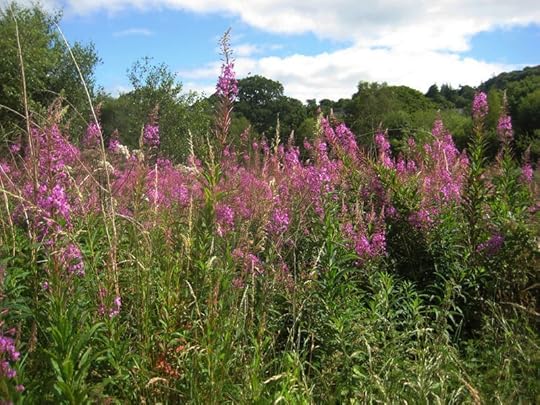 "First People" was published in Intimate Nature: The Bond Between Women and Animals, edited by Linda Hogan, Deena Metzger, and Brenda Peterson (Fawcett Columbine/Ballatine, 1998).
"First People" was published in Intimate Nature: The Bond Between Women and Animals, edited by Linda Hogan, Deena Metzger, and Brenda Peterson (Fawcett Columbine/Ballatine, 1998).
Recommended Reading
"I think part of my purpose in this life is to talk about magic, and to make it." - Theodora Goss, from her blog post "Finding the Magic."
August 13, 2012
Animalness
“We need another and a wiser and perhaps a more mystical concept of animals. We patronize them for their incompleteness, for their tragic fate of having taken form so far beneath ourselves. For the animal shall not be measured by man. In a world older and more complex than ours, they move finished and complete, gifted with extensions of the senses we have lost or never attained, living by voices we shall never hear. They are not brethren, they are not underlings; they are other nations, caught with ourselves in the net of life and time, fellow prisoners of the splendour and travail of the earth.” - Henry Beston (from The Outermost House)
“How monotonous our speaking becomes when we speak only to ourselves! And how insulting to the other beings – to foraging black bears and twisted old cypresses – that no longer sense us talking to them, but only about them, as though they were not present in our world…Small wonder that rivers and forests no longer compel our focus or our fierce devotion. For we walk about such entities only behind their backs, as though they were not participant in our lives. Yet if we no longer call out to the moon slipping between the clouds, or whisper to the spider setting the silken struts of her web, well, then the numerous powers of this world will no longer address us – and if they still try, we will not likely hear them.” - David Abram (from Becoming Animal)
“Maybe it's animalness that will make the world right again: the wisdom of elephants, the enthusiasm of canines, the grace of snakes, the mildness of anteaters. Perhaps being human needs some diluting." - Carol Emswhwiller (from Carmen Dog)
________________________________________________________________________
Art credits: The painting at the top of this post is by Virginia Frances Sterrett (1900-1931), an American illustrator who died tragically young from tuberculosis. The piece here (titled "Blondine Threw Her Arms Around Him") was commissioned for an American edition of Comtesse de Ségur's Old French Fairy Tales, published when the artist was just 19. The two photographs of Dartmoor sheep are by my friend Helen Mason, followed by a 19th century illustration (artist unknown). The final drawing, by the English illustrator John Dickson Batten (1860-1932), is from Joseph Jacob's More Celtic Fairy Tales.
August 12, 2012
Tunes for a Monday Morning
The first two tunes this week are from Nickel Creek, the fabulous (and sadly defunct) alt-folk band from San Diego, California, featuring Sara Watkins on fiddle, her brother Sean Watkins on guitar, and the brilliant Chris Thile (pre-Punch Brothers) on mandolin. The group performed together from 1989 - 2007, and released six albums.
Above: A live performance of "The Fox," a song on their debut album, Nickel Creek (200o).
Below: "Reason's Why," performed on the Tonight Show (2006).
I'm not entirely certain who the fourth musician is in these videos, as several people (including Chris' father) played bass for the band at various times.
The final tune, below:
"Take Up Your Spade," a gorgeous song from Sara Watkin's recent solo album Sun Midnight Sun (2012).
Recommended Reading
"[E]verything is fiction," says the Irish novelist Keith Ridgway in an interesting post about writing on The New Yorker's blog. "When you tell yourself the story of your life, the story of your day, you edit and rewrite and weave a narrative out of a collection of random experiences and events. Your conversations are fiction. Your friends and loved ones—they are characters you have created. And your arguments with them are like meetings with an editor—please, they beseech you, you beseech them, rewrite me. You have a perception of the way things are, and you impose it on your memory, and in this way you think, in the same way that I think, that you are living something that is describable. When of course, what we actually live, what we actually experience—with our senses and our nerves—is a vast, absurd, beautiful, ridiculous chaos."
The full post is here.
Illustration above by Edmund Dulac (1882-1953)
August 9, 2012
Time and memory
“A book is made from a tree. It is an assemblage of flat, flexible parts (still called 'leaves') imprinted with dark pigmented squiggles. One glance at it and you hear the voice of another person, perhaps someone dead for thousands of years. Across the millennia, the author is speaking, clearly and silently, inside your head, directly to you. Writing is perhaps the greatest of human inventions, binding together people, citizens of distant epochs, who never knew one another. Books break the shackles of time, proof that humans can work magic.” - Carl Sagan
“Writing is a futile attempt to preserve what disappears moment by moment. All that remains of my mother is what I remember and what I have written for and about her. Eventually that is all that will remain of [my husband] and me. Writing sometimes feels frivolous and sometimes sacred, but memory is one of my strongest muses. I serve her with my words. So long as people read, those we love survive however evanescently. As do we writers, saying with our life's work, Remember. Remember us. Remember me.” - Marge Piercy
The book art above is by Su Blackwell and Samantha Y. Huang, both based in London, and Nicholas Jones, based in Melbourne, Australia. Please visit their websites to see more.
August 8, 2012
The breadth of memory
“A necessary part of our intelligence is on the line as the oral tradition becomes less and less important. There was a time throughout our land when it was common for stories to be told and retold, a most valuable exercise, for the story retold is the story reexamined over and over again at different levels of intellectual and emotional growth.” - Wes Jackson (from Becoming Native to This Place)
"Stories have to be told or they die, and when they die, we can't remember who we are or why we're here.” - Sue Monk Kidd (from The Secret Life of Bees)
"A people are as healthy and confident as the stories they tell themselves. Sick storytellers can make nations sick. Without stories we would go mad. Life would lose it’s moorings or orientation.... Stories can conquer fear, you know. They can make the heart larger." - Ben Okri
“I believe in all human societies there is a desire to love and be loved, to experience the full fierceness of human emotion, and to make a measure of the sacred part of one's life. Wherever I've traveled -- Kenya, Chile, Australia, Japan -- I've found the most dependable way to preserve these possibilities is to be reminded of them in stories. Stories do not give instruction, they do not explain how to love a companion or how to find God. They offer, instead, patterns of sound and association, of event and image. Suspended as listeners and readers in these patterns, we might reimagine our lives. It is through story that we embrace the great breadth of memory, that we can distinguish what is true, and that we may glimpse, at least occasionally, how to live without despair in the midst of the horror that dogs and unhinges us.” - Barry Lopez
“Let us go forth, the tellers of tales, and seize whatever prey the heart longs for, and have no fear. Everything exists, everything is true, and the earth is only a little dust under our feet." ― William Butler Yeats
August 7, 2012
The relationship between writers and readers
“We're all strangers connected by what we reveal, what we share, what we take away -- our stories. I guess that's what I love about books -- they are thin strands of humanity that tether us to one another for a small bit of time, that make us feel less alone or even more comfortable with our aloneness, if need be.” ― Libba Bray
“Reading a book is like re-writing it for yourself. You bring to a novel, anything you read, all your experience of the world. You bring your history and you read it in your own terms.” - Angela Carter
"I can't write without a reader. It's precisely like a kiss - you can't do it alone." - John Cheever
 Art above: "A Lady Reading" and a detail from "The Brown Tea Pot" by Gwen John. (My previous post about the artist is here.) For further reflections on the power of writing and reading, I recommend Elaine Scarry's article "Poetry Changed the World" in The Boston Review.
Art above: "A Lady Reading" and a detail from "The Brown Tea Pot" by Gwen John. (My previous post about the artist is here.) For further reflections on the power of writing and reading, I recommend Elaine Scarry's article "Poetry Changed the World" in The Boston Review.
Terri Windling's Blog
- Terri Windling's profile
- 707 followers






